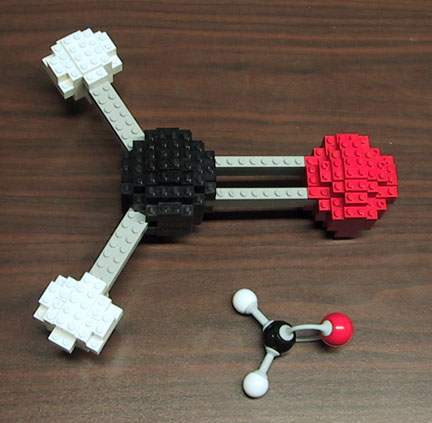I guess I should start things off with one of my own and give a little insight into myself. Chemists in general, and organic chemists in particular, often build models of the molecules that interest them. Dean Tantillo, a friend of mine who is a chemist at UC Davis, assembled a
gallery of photos of chemists and their models. A model could be defined as a representation of a real object that tries to capture some of the properties of that object while abstracting other properties. For instance, a model airplane built out of LEGO might capture the basic shape and color scheme of a real airplane, but it is much smaller and does not fly. A molecular model allows us to examine the relative arrangements of atoms in a molecule, but is obviously at a significantly different scale. Nobel laureate Roald Hoffmann has a great
essay on how the method we use to depict molecules affects how we think about them (compare to Orwell's thoughts about how the language we use affects how we think). His essay is more about 2-dimensional depictions, but it also applies to 3-dimensional models.

Here is a
LEGO model of formaldehyde that I built, sitting next to a model using a
commercially available molecular modeling set. In the color scheme that organic chemists tend to use, the black sphere represents a carbon atom, the red sphere represents an oxygen, and the white spheres represent hydrogens. The gray lines represent bonds, or shared pairs of electrons. Note that two of the bonds are single bonds and one is a double bond. Also note that the angles between the bonds are roughly 120 degrees, which is appropriate to the actual model.
On a personal note, I really do think that my building with LEGO as a kid helped contribute to my interest in science as an adult. When I took chemistry and started building models, it immediately took me back to the happy days of my youth playing with a pile of little plastic blocks. Thinking in three dimensions is very important to an organic chemist, and again I think that LEGO modeling helped develop that skill.

No comments:
Post a Comment